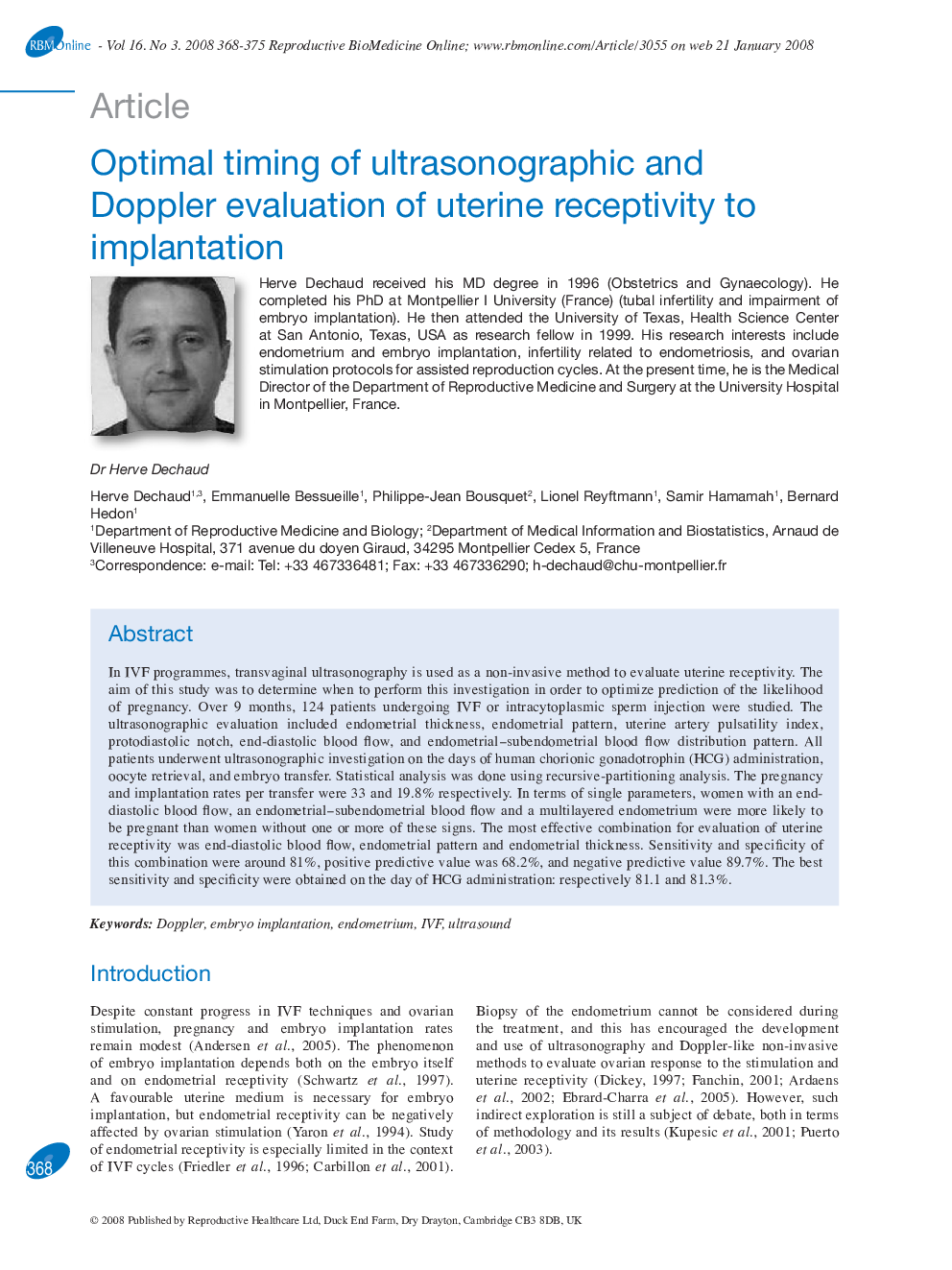| کد مقاله | کد نشریه | سال انتشار | مقاله انگلیسی | نسخه تمام متن |
|---|---|---|---|---|
| 3972753 | 1256821 | 2008 | 8 صفحه PDF | دانلود رایگان |

In IVF programmes, transvaginal ultrasonography is used as a non-invasive method to evaluate uterine receptivity. The aim of this study was to determine when to perform this investigation in order to optimize prediction of the likelihood of pregnancy. Over 9 months, 124 patients undergoing IVF or intracytoplasmic sperm injection were studied. The ultrasonographic evaluation included endometrial thickness, endometrial pattern, uterine artery pulsatility index, protodiastolic notch, end-diastolic blood flow, and endometrial–subendometrial blood flow distribution pattern. All patients underwent ultrasonographic investigation on the days of human chorionic gonadotrophin (HCG) administration, oocyte retrieval, and embryo transfer. Statistical analysis was done using recursive-partitioning analysis. The pregnancy and implantation rates per transfer were 33 and 19.8% respectively. In terms of single parameters, women with an end-diastolic blood flow, an endometrial–subendometrial blood flow and a multilayered endometrium were more likely to be pregnant than women without one or more of these signs. The most effective combination for evaluation of uterine receptivity was end-diastolic blood flow, endometrial pattern and endometrial thickness. Sensitivity and specificity of this combination were around 81%, positive predictive value was 68.2%, and negative predictive value 89.7%. The best sensitivity and specificity were obtained on the day of HCG administration: respectively 81.1 and 81.3%.
Journal: Reproductive BioMedicine Online - Volume 16, Issue 3, 2008, Pages 368-375